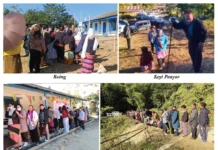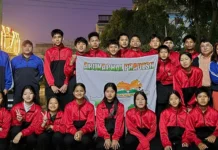ITANAGAR, 30 Apr: The Arunachal Pradesh government has taken up three villages along the India-China border as a pilot initiative for developing them as model villages, Deputy Chief Minister Chowna Mein said here on Saturday.
“The three villages – Kaho, Kibithoo, and Meshai – have been taken up with a focus on 3Cs – cluster, convergence, and community,” Mein said.
The DCM was addressing a panel discussion here as part of the Azadi Ka Amrit Mahotsav.
“The state government has earmarked Rs 30 crores for the development of these villages in the 2021-22 budget,” he said.
“We will continue to work for comprehensive development of border villages by providing them good road connectivity, power, water supply, health, and education,” Mein said.
It is extremely important that the government takes up comprehensive development of the border areas by not only filling the infrastructural gaps but also by improving public service delivery in the remotest corners, the DCM said.
“We need to focus on income-generating activities for the people residing in the tough border areas and ensure that all government programmes reach the last man,” he added.
Mein, who also holds the power and hydropower portfolios, said that the state government has sanctioned Rs 16 crores for installing 6,000 streetlights in 700 border villages.
Recently, the state government also took up solar electrification of eight remote villages in Tali circle of Kra Daadi district, in partnership with Sri Sri Rural Development Trust, he said.
To meet the power requirements of the people and the armed forces residing in the border areas, the government has launched the ‘golden jubilee border village illumination programme’ with a mission to construct 50 micro-hydel projects in remote border villages.
In the first phase, the government has sanctioned Rs 50 crores for 17 projects, covering 218 villages.
Pointing out that the state is witnessing a “rapid pace of development,” Mein said that “it is prudent to see that the pace of development should not lead to the loss of culture and cultural identities.”
The main challenge about tribal welfare has been maintaining a robust pace of development in the modern sense, while preserving its distinctive rich tribal cultural heritage. While the pace of development should not be at the cost of loss of culture, we just cannot ignore the desire for development, he said. (PTI)



